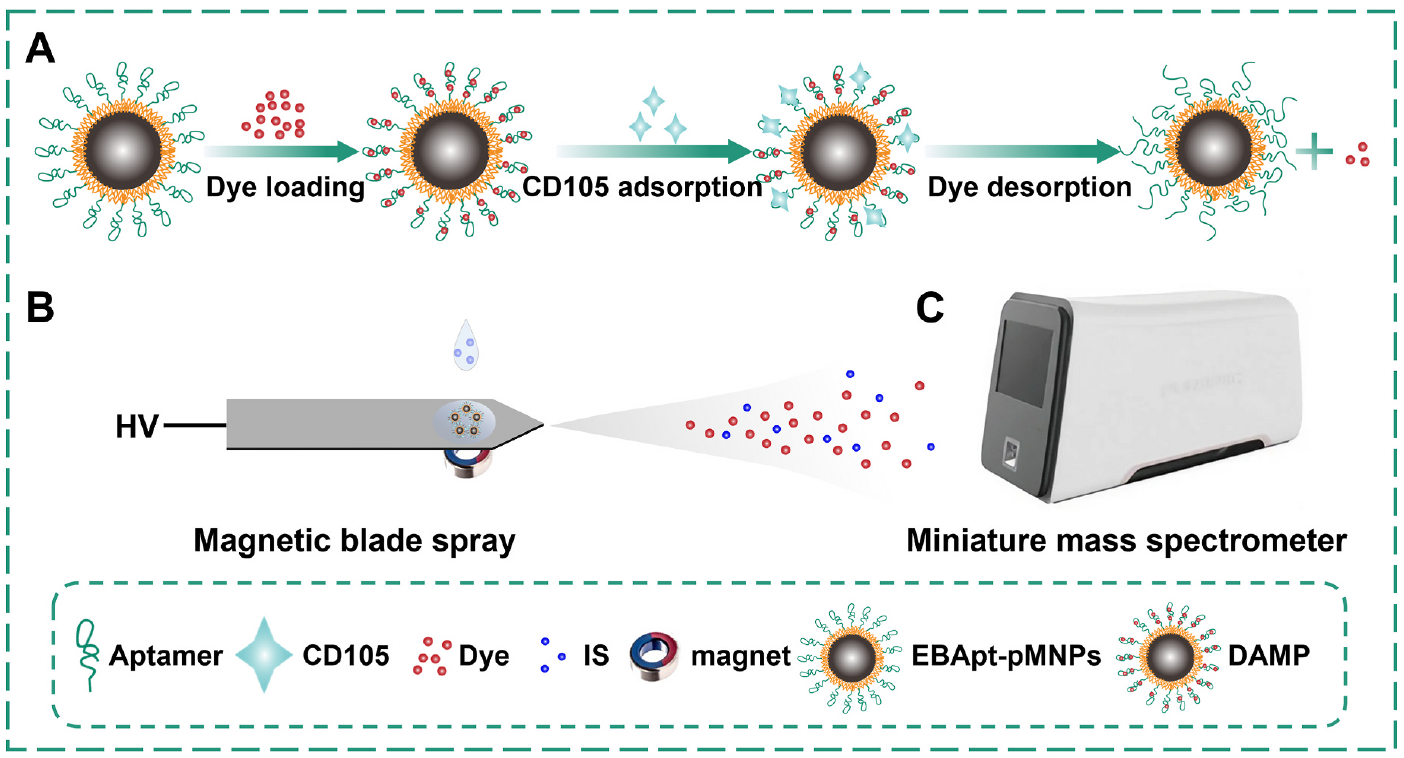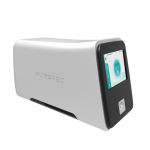Aptamer-functionalized magnetic blade spray coupled with a nucleic acid dye-based mass tag strategy for miniature mass spectrometry analysis of endoglin
Ambient ionization mass spectrometry (AIMS) allows rapid analysis of targets, while its overall selectivity is somewhat limited due to the lack of chromatographic separation. Recently, magnetic blade spray (MBS) has enhanced AIMS by incorporating immunomagnetic beads instead of the traditional coated blade spray (CBS) coating, thereby improving selectivity and sensitivity by targeted analyte detection and reducing background interference. In this study, an aptamer-functionalized and nucleic acid dye (GelRed)-loaded MS probe (AGMP) was developed and employed with MBS-based miniature mass spectrometer. Specifically, AGMP was assembled using aptamer-functionalized magnetic nanoparticles loaded with GelRed as mass tags for highly sensitive analysis of endoglin (CD105). For the preparation of AGMP, the CD105 binding aptamer of End-A2 was first selected through three rounds of capillary electrophoresis (CE)-SELEX with an optimal affinity of 62.3 pM. After optimizing the critical parameters that affected adsorption, desorption, and ionization efficiency, this method displayed satisfactory sensitivity with detection and quantitation limits of 0.2 and 1 ng/mL, respectively, as well as reliable recoveries of 90.1–106.8% with relative standard deviations of 1.6–5.4%. Besides, the method effectively mitigated the matrix effects with a slope deviation of 10.03%, and exhibited good selectivity and environmental friendliness. Furthermore, this AGMP-based MBS strategy was successfully applied for CD105 detection in serum samples, demonstrating its potential for sensitive and on-site biomolecule analysis in complex matrices.

In this study, a novel AGMP-based MBS method for CD105 detection in a serum matrix coupled with a miniature mass spectrometer was proposed. The AGMP were constructed based on aptamer-functionalized magnetic hydrophilic polymer nanoparticles (EBApt-pMNPs) and nucleic acid dye (GelRed). It was worth noting that in AGMP, the aptamer against CD105 was first selected through CE-SELEX with excellent affinity (62.3 pM). Due to the high specificity and affinity of the aptamer for CD105 protein, and the use of GelRed as a mass tag, AGMP exhibited sensitive and selective detection of CD105 with LOD of 0.2 ng/mL and LOQ of 1.0 ng/mL, as well as a satisfactory recovery of 90.1–106.8% with RSDs of 1.6–5.4%. The proposed method exhibited good selectivity and environmental friendliness, and could effectively mitigate matrix effects with a slope deviation of 10.03%. Future research could also improve the detection sensitivity by increasing the loading capacity of dye molecules using highly loaded nanomaterials or sequence amplification strategies. Additionally, this strategy can be expanded by employing different aptamers against various targets to enable their high sensitive detection.
Talanta 283 (2025) 127142


